

- October 7, 2023
- 4:05 pm
- No Comments
The Art of Graphic Design Branding: Designing Success
In the ever-evolving realm of business and marketing, the significance of graphic design branding cannot be overstated. It acts as the visual storyteller that articulates a brand’s identity, values, and character to the world at large. From the creation of logos that spark instant recognition to the careful selection of color palettes that evoke emotions, graphic design branding is the artistic force that leaves an indelible mark. In this blog, we’ll delve deep into the world of graphic design branding, exploring its transformative influence on brand recognition, trust, and consumer loyalty.
1. What is Branding in Graphic Design?
Branding in graphic design is the art of visually and emotionally representing a business or organization. It encompasses the creation and strategic use of visual elements, such as logos, color palettes, typography, and imagery, to establish a distinct and recognizable brand identity design.
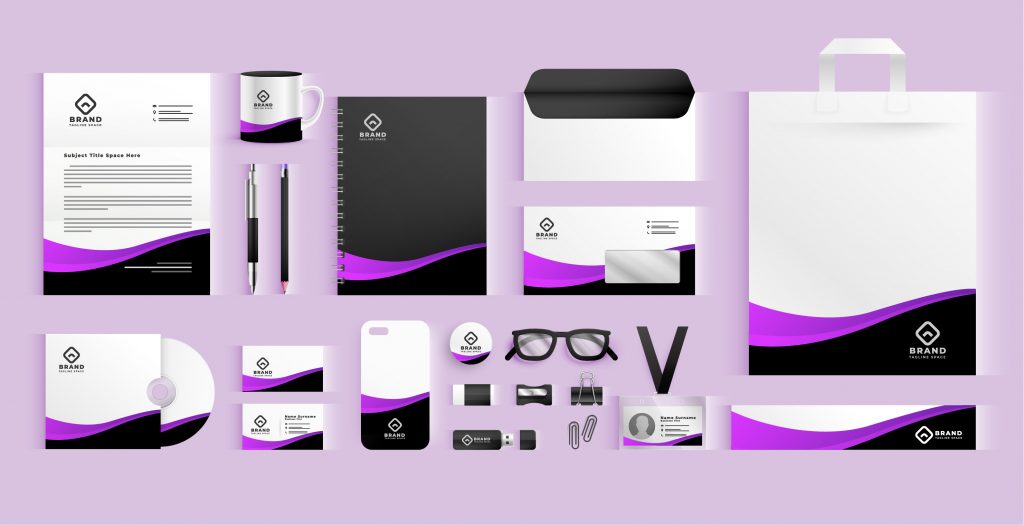
Branding in graphic design is the art of visually and emotionally representing a business or organization.
At its core, graphic design branding aims to convey a brand’s unique values, personality, and promise to its target audience. It goes beyond aesthetics, diving deep into the realm of storytelling and perception. A well-executed branding identity not only makes a brand memorable but also communicates its essence, making it relatable and trustworthy to consumers.
Graphic designers play a pivotal role in crafting these visual brand elements and ensuring their consistent application across various platforms and materials. Ultimately, branding in graphic design is about creating a strong and lasting impression that resonates with the audience, fostering brand recognition, loyalty, and long-term success.
2. The Role of Graphic Design in Branding
2.1 Establishing Brand Visual Identity
Graphic design plays a fundamental role in branding by creating a brand visual identity that distinguishes a brand from its competitors. This includes crafting logos, choosing distinct color palettes, and defining unique typography. Consistency in these design elements ensures that consumers easily recognize and remember the brand, reinforcing its image and values.
2.2 Conveying Brand Personality
Graphic design branding communicates a brand’s personality and character. Whether it’s sleek and modern or traditional and trustworthy, the choice of brand design elements such as shapes, fonts, and imagery reflects the brand’s intended personality. These visual cues influence how consumers perceive the brand, making it crucial to align brand design choices with the desired brand image.
2.3 Creating Emotional Connections
Graphic design branding has the power to evoke emotions and create connections with consumers. Through thoughtful design, brands can tap into the viewer’s feelings, aspirations, and desires. The right combination of colors, imagery, and design elements can trigger emotional responses that resonate with the target audience, forging a strong bond and lasting brand loyalty.
2.4 Enhancing Brand Recall
Memorable graphic design branding elements, particularly logos, serve as visual cues that aid brand recall. A well-designed and distinct logo can stay in the minds of consumers, making it easier for them to remember and recognize the brand amidst a sea of choices. Effective graphic design ensures that a brand remains imprinted in the memory of its audience.
2.5 Differentiating from Competitors
In a competitive marketplace, graphic design branding sets a brand apart from its rivals. By creating a unique visual identity, brands can stand out and emphasize what makes them special. Effective brand design helps convey why a brand is the superior choice, reinforcing its value proposition and encouraging consumers to choose it over alternatives. It’s an essential tool for positioning a brand as a leader in its industry and ensuring its distinctiveness is recognized and valued by consumers.
3. The Psychology of Design
3.1 Color Psychology
Color psychology explores how different colors elicit specific emotional responses and perceptions. Designers leverage this knowledge to create moods and convey messages. For example, red often signifies passion or urgency, while blue conveys trust and professionalism. Understanding color psychology helps brands select the right palette to align with their messaging and target audience, reinforcing the desired emotional connections.
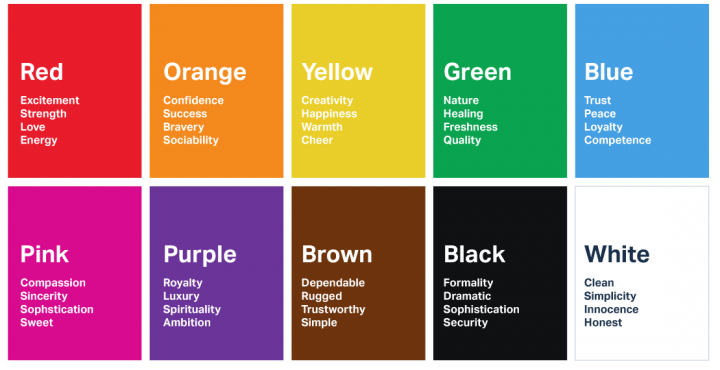
Color psychology explores how different colors elicit specific emotional responses and perceptions (source: Internet).
3.2 Typography Choices
Typography, the selection and arrangement of fonts, is a powerful tool in design psychology. Fonts have distinct personalities and can evoke feelings ranging from formality to playfulness. Serif fonts, for instance, are often associated with tradition and reliability, while sans-serif fonts tend to feel modern and clean. Designers carefully choose typography to ensure that it complements the brand’s identity and effectively communicates its message.
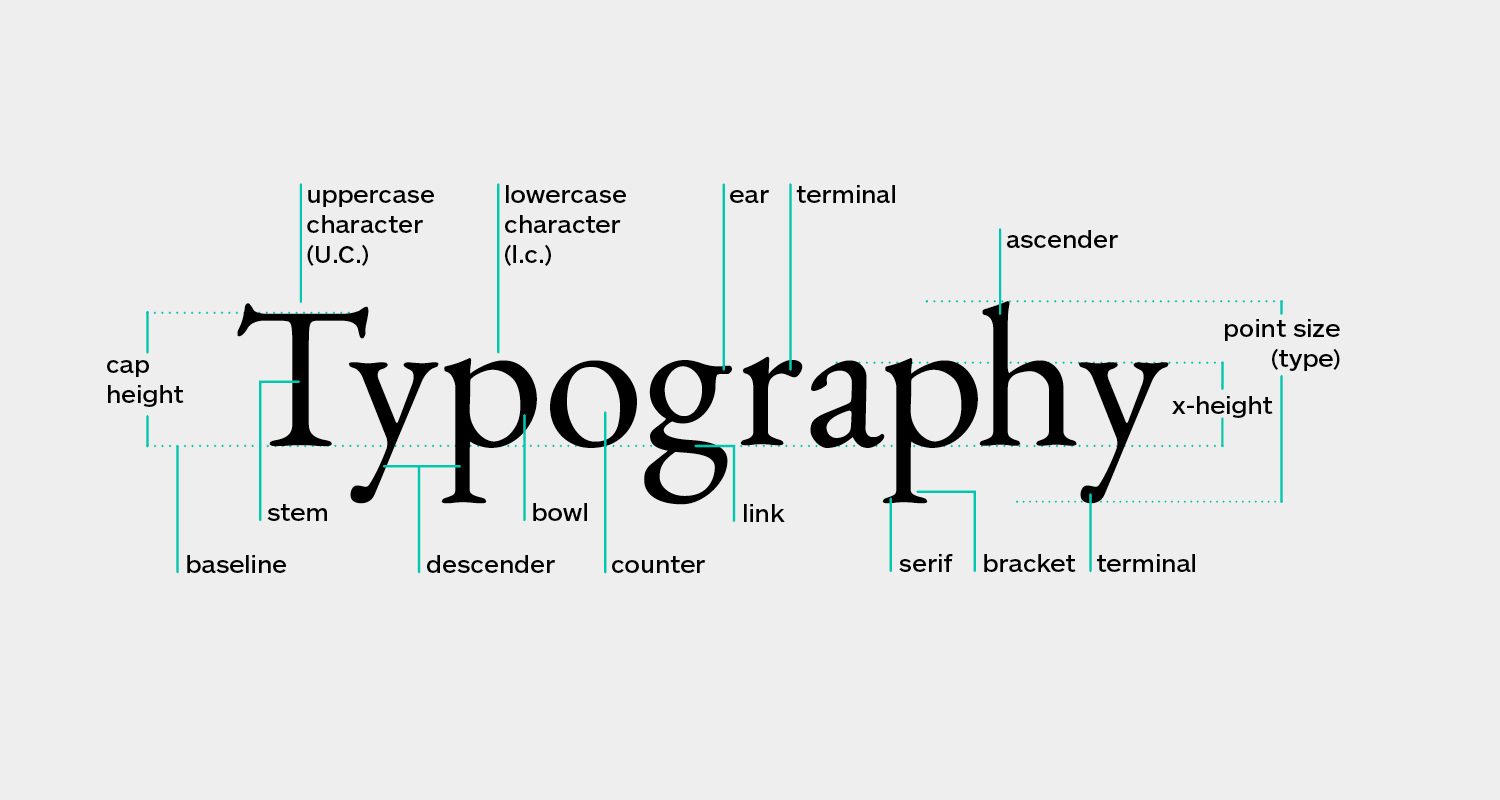
Typography, the selection and arrangement of fonts, is a powerful tool in design psychology (source: Internet).
3.3 Visual Hierarchy
Visual hierarchy in design influences the order in which viewers perceive and absorb information. By strategically placing elements like headlines, images, and call-to-action buttons, designers guide the viewer’s eye through a specific path. This technique aids in emphasizing key messages and ensuring that the most important information is noticed first. Understanding visual hierarchy is vital for designers to direct attention effectively, engage the audience, and communicate messages clearly.

Visual hierarchy in design influences the order in which viewers perceive and absorb information (source: Internet).
3.4 Symmetry and Balance
Symmetry and balance in design contribute to the overall aesthetic appeal and convey messages of stability and order. Symmetrical layouts, where elements are evenly distributed on both sides of a central axis, often represent formality and reliability. Asymmetry, on the other hand, can suggest creativity and dynamism. Designers use these principles to reinforce brand characteristics and create a harmonious visual experience that resonates with the target audience.
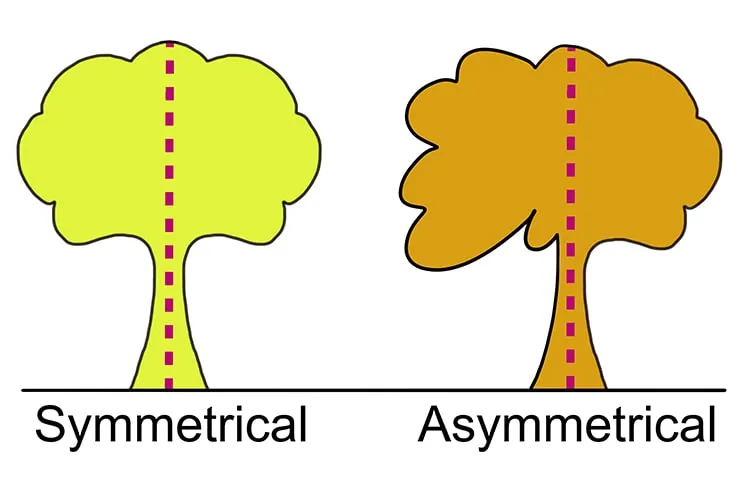
Symmetry and balance in design contribute to the overall aesthetic appeal and convey messages of stability and order (source: Internet).
4. Creating Memorable Logos
Creating memorable logos is a cornerstone of graphic design branding. A logo is often the first point of contact between a brand and its audience, making it a critical element in establishing a lasting impression. Here’s how designers craft logos that leave a mark:
- Simplicity: Memorable logos are often simple and uncluttered. They feature clean lines and easily recognizable shapes. Simplicity ensures that the logo can be easily recalled and recognized across various mediums and sizes.
- Uniqueness: Effective logos are distinctive and stand out in a crowded marketplace. They avoid clichés and mimicry, opting for originality that sets the brand apart.
- Relevance: A memorable logo must be relevant to the brand it represents. It should encapsulate the brand’s essence, values, and industry. A logo that aligns with the brand’s identity resonates more deeply with the audience.
- Versatility: Memorable logos are versatile and work well in different applications, from digital platforms to print materials. They maintain their integrity and impact regardless of size or context.
- Timelessness: Successful logos have a timeless quality that doesn’t succumb to fleeting design trends. They remain relevant and effective for years, even decades, without needing frequent redesigns.
- Memorability: Above all, a memorable logo is one that sticks in the minds of consumers. It’s the logo that people instantly recognize and associate with the brand, forming a strong bond and driving brand loyalty.
Graphic designers play a pivotal role in crafting logos that fulfill these criteria. Through careful consideration of design elements, symbolism, and aesthetics, they create logos that not only visually represent the brand but also leave a lasting imprint on the audience’s memory, becoming iconic symbols of the brand itself.
5. Consistency Across Platforms
5.1 Consistency in Branding
Consistency in branding extends beyond visual elements; it encompasses the uniformity of messaging, values, and the overall brand experience across various platforms. It’s the assurance that customers encounter the same brand essence, whether they interact with it on social media, a website, or in printed materials. This consistency builds trust, fosters brand recognition, and reinforces the brand’s identity, ensuring that consumers perceive the brand as reliable, professional, and authentic, regardless of where and how they engage with it.
5.2. Design Brand Guidelines
Design Brand Guidelines are indispensable documents of brand graphics for preserving a brand’s visual and messaging consistency. These guidelines provide clear directives for elements like logos, colors, typography, and messaging tone. By ensuring uniformity in design and communication, they strengthen brand recognition and reinforce the brand’s identity across all platforms and materials. This consistency not only builds trust but also streamlines collaboration among various stakeholders. Design brand guidelines act as a safeguard against misrepresentation and help brands work more efficiently while protecting their integrity and unique identity.
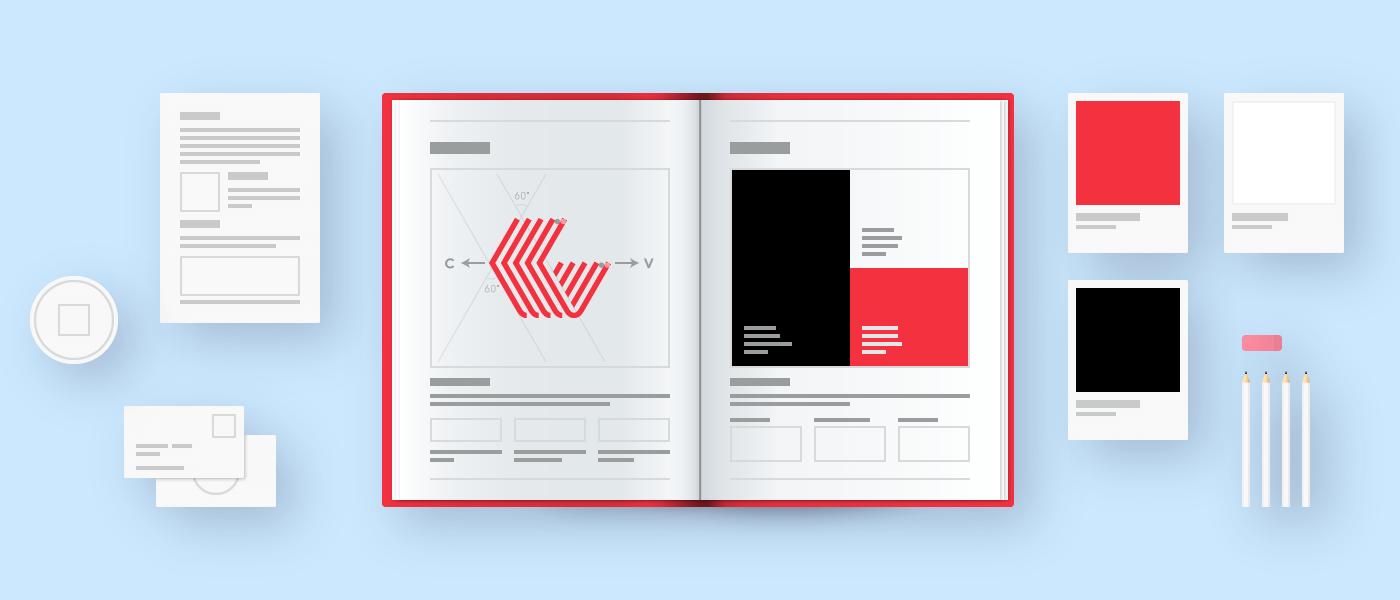
Design Brand Guidelines are indispensable documents of brand graphics for preserving a brand’s visual and messaging consistency (source: Internet).
6. Real-Life Examples of Successful Graphic Design Branding
6.1 Case Study 1: Coca-Cola – Timeless Logo Design
Coca-Cola‘s branding success is epitomized by its iconic logo, which has remained virtually unchanged since its inception in 1886. The brand’s timeless logo features its distinctive cursive font and a bold red color palette. This logo embodies the brand’s core values of refreshment, happiness, and optimism. Despite the passage of more than a century, the logo’s consistency has been instrumental in establishing Coca-Cola as a global beverage leader. It’s instantly recognizable, conveys a sense of tradition, and has played a pivotal role in making Coca-Cola one of the world’s most valuable and beloved brands.

Coca-Cola’s branding success is epitomized by its iconic logo, which has remained virtually unchanged since its inception in 1886 (source: Internet).
6.2 Case Study 2: Nike – Swoosh Symbolism
Nike‘s “Swoosh” logo, introduced in 1971 for a mere $35, is a masterclass in minimalist design with deep symbolism. The simplicity of the swoosh represents movement and speed, aligning perfectly with Nike’s athletic focus. The logo’s versatility allows it to adapt seamlessly to various products, from sneakers to sportswear. Nike’s branding success is not just about its logo but how it’s applied consistently across platforms. This branding strategy has propelled Nike to be synonymous with athleticism, empowerment, and innovation, contributing to its status as a global leader in athletic apparel and footwear.
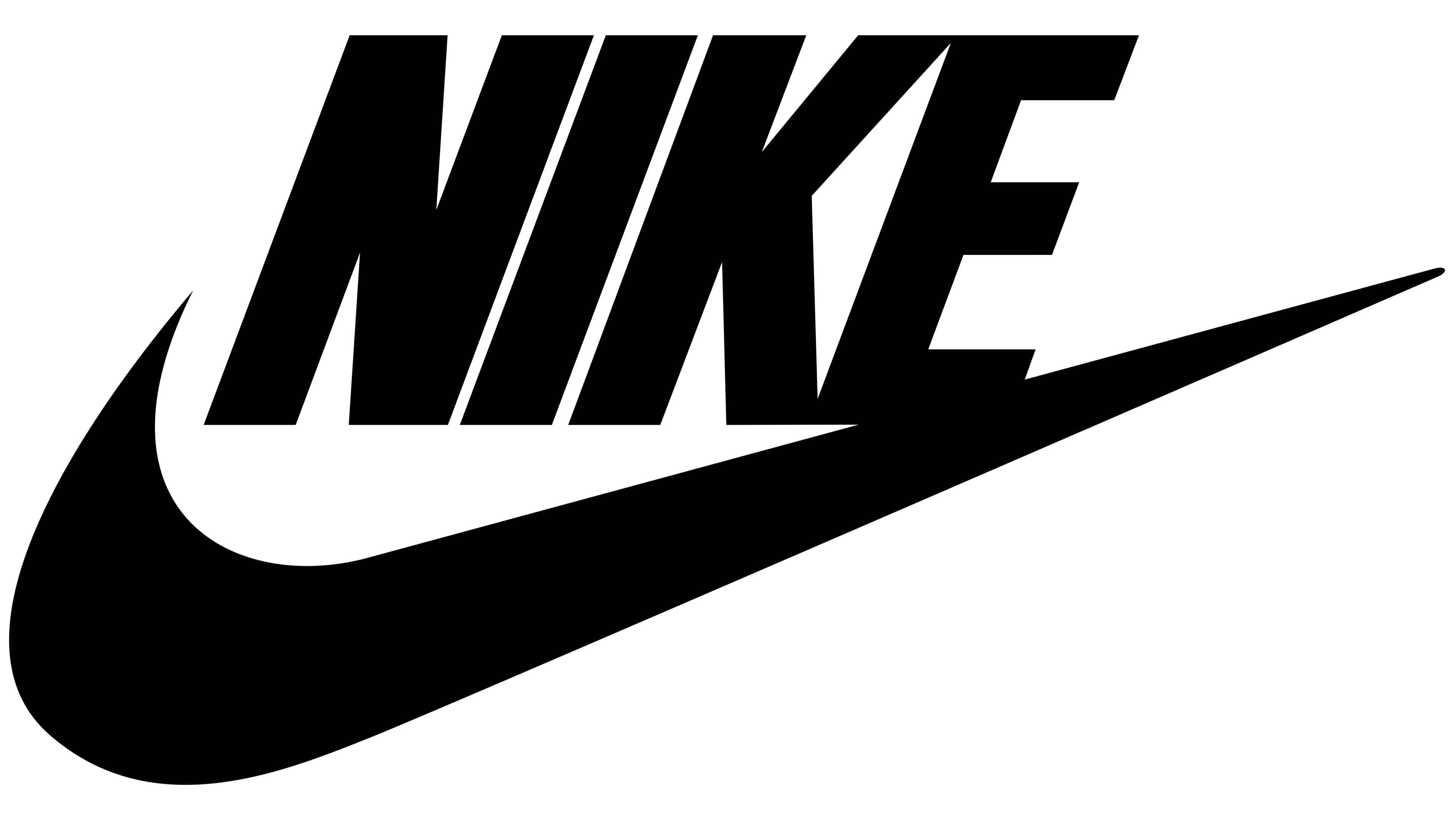
Nike’s “Swoosh” logo, introduced in 1971 for a mere $35, is a masterclass in minimalist design with deep symbolism (source: Internet).
7. Conclusion
As we navigate the ever-evolving terrain of marketing and brand communication, graphic design branding stands as a silent yet mighty protagonist. It weaves the visual tapestry that captivates audiences and etches brands into the annals of memory. As you embark on your own branding odyssey, remember that the potency of graphic design transcends mere aesthetics; it’s a bridge to connect, an instrument to engage, and a wellspring of inspiration. For the best graphic design and branding services, choose Surfline Media; we’re here to craft your brand’s visual narrative with distinction.
_______________________

Surfline Media – Automate to Elevate
Our website: https://surflinemedia.com/
Contact us: https://surflinemedia.com/contact-us/
Phone number: 877.358.9909
Email: info@surflinemedia.com






